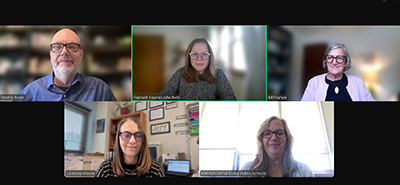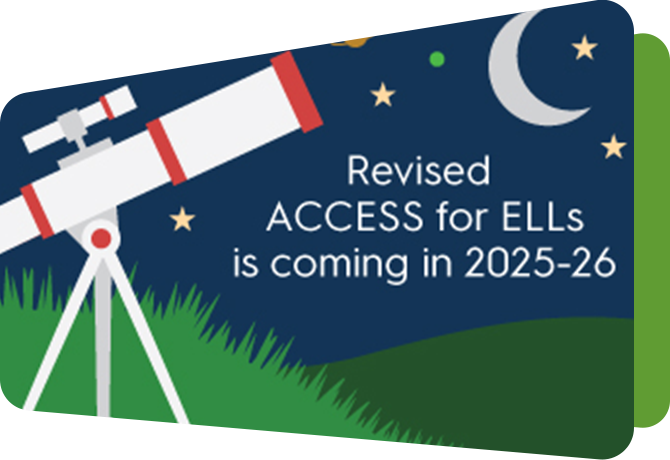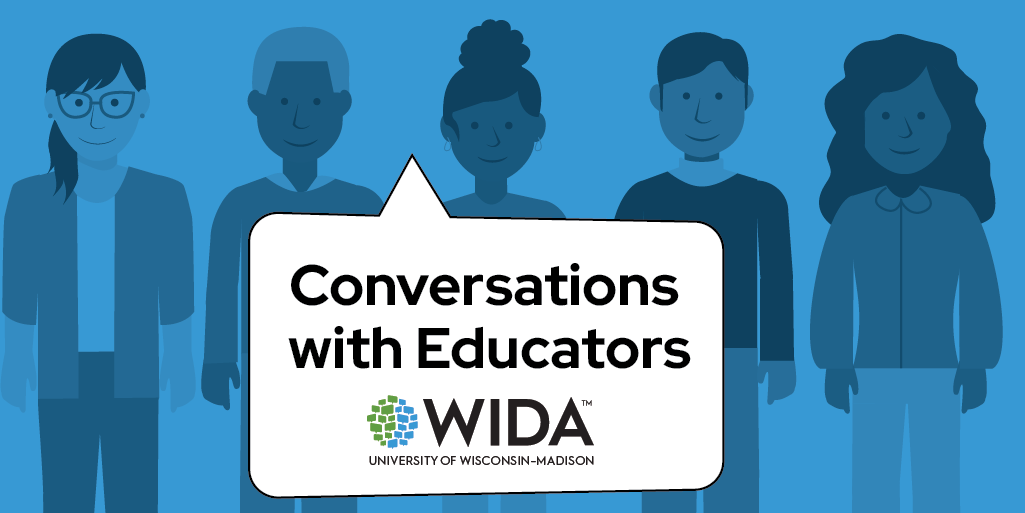Educator resiliency as a process: Lessons in longevity and creativity

Catriona Moore and Kathryn Gimse have been working in multilingual education for a combined 60 years. They spent seven of those years working together in Minnesota, where they developed a shared understanding of the keys to job longevity and building resilience in an increasingly challenging profession.
Catriona and Kathryn spoke with Tim Boals, WIDA founder and senior principal investigator, and Merideth Trahan, WIDA chief of staff, about these ideas and their tips for a long and sustaining career.
The power of partnerships
Key takeaway: Lean into community and collaboration. Find people to work with—whether it’s a teaching partner, supportive leadership or a network of like-minded educators.
For Kathryn and Catriona, career resilience began with partnership. Sharing a classroom allowed them to create their dream environment—a welcoming, purposeful and literacy-filled space where every decision reflected their students’ needs. With most of their students being Hmong, having a cultural liaison was transformative. They initially worked with Mr. Youa Kong, a Hmong elder, and later with Mr. Chao Kong, his nephew.
“[The Kongs] really helped us learn on a deep level about the culture, giving us an entrance into the community that we, otherwise, wouldn’t have had,” Kathryn recalled.
This collaborative environment, enriched by cultural insights, fostered curiosity and intellectual engagement, both for the students and the educators themselves.
“We also had a supportive principal, Celeste Carty,” Catriona added. “All of these collaborative relationships gave us the trust and space to experiment and create something meaningful.”
Curiosity as a resilience tool
Key takeaway: Reframe challenges with curiosity. Shift your perspective to focus on solutions and possibilities.
One of the key strategies for resilience, Catriona shared, is reframing challenges through a lens of curiosity.
“When you can look at something through the lens of curiosity—a challenge or a problem—you're not blaming [anyone] or making excuses,” she explained. “You’re, instead, looking for explanations and solutions.”
This mindset of curiosity not only fueled intellectual engagement but also provided a sense of agency. By zooming out to engage with broader ideas or connect with a wider community, they were able to contextualize challenges beyond their immediate classroom.
At the same time, zooming in on tangible, micro-level strategies helped make challenges manageable. For example, Catriona highlighted using simple activities, like reorganizing text into paragraphs to lower the cognitive load for students while also fostering social interactions and language development.
Leaning into creativity and classroom projects
Key takeaway: Infuse creativity into your teaching. Projects, art and music not only engage students but can also sustain your joy as an educator.
Creativity played a central role in Kathryn and Catriona’s classroom—not just to engage students, but to sustain themselves as educators. They wove art, music and project-based learning into daily lessons. These projects created a joyful and dynamic environment.
“Every day, kids were laughing. We had music playing, and we were creating,” Kathryn said. “That creative spark really helped our students as they transitioned into a new culture and language. It was a transformative period for them, and the creative process went side-by-side with that transformation.”
For Catriona, projects become portals—avenues for deeper understanding and unexpected learning experiences. Those unexpected learning experiences, together with creativity, helped both teachers and students transform trauma into resilience.
“Processing ideas through creativity is a way to take ownership of challenges and turn them into something powerful,” she said.
Navigating the emotional load and secondhand trauma
Key takeaway: Recognize what you can and can’t control. Accept that some challenges are beyond your scope to fix and focus on making a difference where you can.
Teaching in communities with high levels of trauma can weigh heavily on educators. Kathryn said there were emotional challenges to teaching in St. Paul, Minnesota, where many families were navigating the stress of immigrating to a new country.
“You feel like you want to fix everything, but you can’t,” she said. “Part of resiliency is learning to sit with that reality and work within it.”
Catriona said the lack of support from administrators or colleagues can exacerbate this emotional load. Ensuring teachers have a network of support—whether through a collaborative team, cultural liaison, strong leadership or one colleague—is essential to navigating these challenges.
“It is absolutely impossible to do this job on your own,” Catriona said.
Resilience is a process
Resilience in teaching is not something that happens overnight—it is built through intentional practices, meaningful connections and a commitment to curiosity and creativity. As Kathryn and Catriona demonstrate, it is about finding joy in the day-to-day moments and leaning on the collective strength of your community.
“Creativity and curiosity create not just knowledge but also insight and wonder. It’s a privilege to get to that space,” Kathryn said.





